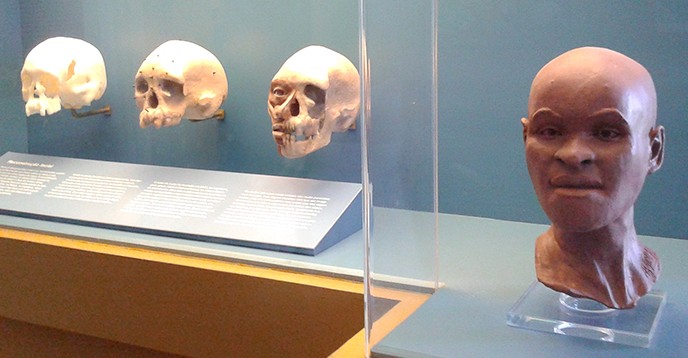focus_reconstituicao_de_luzia_cc-by-sa-4_dornicke.jpg

UNESCO Global Geoparks will each donate a sample representative of their geological heritage to Brazil’s Museu Nacional, in order to support the Museum’s recovery following the tragic loss of many of its unique collections in a fire on 2 September. The decision was adopted unanimously during the 8th International Conference on UNESCO Global Geoparks that took place on 11-14 September in Adamello Brenta UNESCO Global Geopark, Italy.
The proposal was submitted to the Global Geoparks Network Association by Artur Abreu Sá, Chair holder of the UNESCO Chair on Geoparks, Sustainable Regional Development and Healthy Lifestyles at the University of Trás-os-Montes e Alto Douro, Portugal. Each of the 140 UNESCO Global Geoparks is to collect and donate a rock, fossil or cultural artifact of scientific importance.
The Museu Nacional is the most important natural history museum in Latin America, with collections related to archaeology, botany, ethnology, ethnography, geology, linguistics, paloeontology and zoology. Many of the lost collections are irreplaceable, including the remains of Luzia, one of our oldest known ancestor in Latin America, recordings of indigenous languages that are no longer spoken, as well as unique fossil collections and holotypes – specimens upon which the description and name of a new species is based. Artifacts from ancient Egypt and the Mediterranean were also lost. The museum’s scientific teams are making every effort to identify and conserve any elements of the original collections that can be saved in a process that may take years. UNESCO is providing support in this lengthy restoration and reconstruction process.
“Our humble initiative is intended to serve as an example for other institutions, such as universities and museums, but also associations and individuals, from all over the world, to help the Museu Nacional,” explains Prof. Artur Abreu Sá. “We hope that many others will follow. It also shows that the members of the network have a responsibility to protect the natural and cultural heritage of the world.” The initiative it will be coordinated by the UNESCO Chair on Geoparks, Sustainable Regional Development and Healthy Lifestyles, the Arouca UNESCO Global Geopark and the Araripe UNESCO Global Geopark, under the supervision of the Global Geoparks Network Association.
In parallel, UNESCO has recently concluded an emergency mission to assist Brazilian authorities with the arduous task of assessing the scale of the damage to the museum building and its vast repository of culturally significant objects, and to propose urgent interventions and safeguarding measures.
